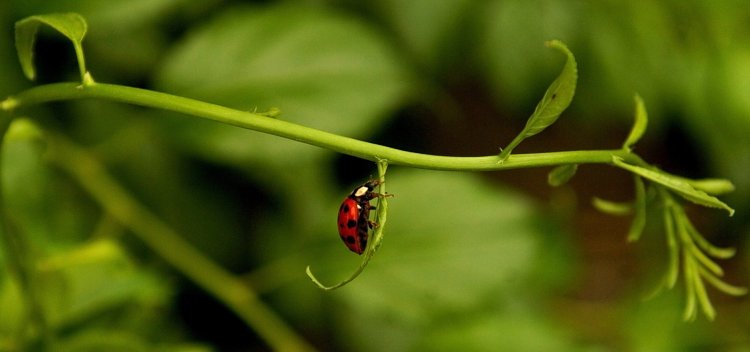“The only good bug is a dead bug,” an old and, I think, discontinued TV commercial for an aerosol insect spray once proclaimed.
Now we know better.
“Over 97 percent of (insects, spiders and related species) usually seen in the home landscape are either beneficial or are ‘innocent bystanders,’” according to a University of Maine Cooperative Extension bulletin titled “Beneficial Insects and Spiders in Your Maine Backyard” – Bulletin 7150 should you want to order it.
Carolyn Snell’s talk this spring to members of the Cape Elizabeth Garden Club prompted me to write about beneficials. Snell, of Snell Family Farm in Buxton, demonstrated how to plant attractive containers of annuals using in part, plants that attract the insects you want, including those that kill the pests.
I called Snell in June, seeking an interview, but her wedding flowers sideline was keeping her busy. She suggested I talk to her mother, Ramona Snell, who, she said, is “more of an expert on beneficial insects.”
Right off the bat (creatures, incidentally, that provide excellent natural control for insects), Ramona Snell advised gardeners to avoid general insecticides because they kill the good arthropods – the general term for insects, spiders, mites and similar small creatures – along with those that are eating your plants.
Beneficial insects kill harmful ones in a variety of ways. Some large insects eat the smaller ones; for example, lady beetles eat aphids. Other beneficials eat the eggs of harmful insects. And some, such as tachinid flies, employ a method that sounds like a horror movie, but is very effective: they lay their eggs in the bodies of harmful insects and eat them from the inside out.
But if you want to grow flowers, fruits and vegetables that insects haven’t chomped on, you don’t need to know how the good insects kill the bad ones. You merely need to know how to attract the good insects – and, happily, there are a lot of those.
The tachinid flies I’ve already mentioned. Other good insects, according to the extension bulletin, include lacewings, lady beetles, hover flies, a variety of wasps, and spiders that catch prey in their webs and kill prey in other ways, too. Most of these beneficials also eat pollen.
“They will eat the pollen until there is some meat in the area,” Snell said, the “meat” being the bad insects that are attacking your plants.

Sweet alyssum helps attract beneficial bugs to your garden. Gregory Rec/Staff Photographer
Which plants are best to attract the good insects?
The top selection is alyssum, Snell said. The alyssum genera has more than 100 species, including annuals, perennials and a very few small shrubs. All work well at attracting beneficials.
Snell also recommended a related group of plants, lobularia. Lobularia maxima is a widely available plant that attracts beneficials. Its common name is sweet alyssum, even though it isn’t in the alyssum genera – further evidence that the people who name plants are purposefully trying to confuse us.
Dill is an excellent plant for attracting beneficials, Snell said. A bonus? It’s a tasty herb with many uses in the kitchen. The extension recommends umbrels, all with a similarly shaped flower, including Queen Anne’s lace, yarrow, Angelica and fennel.

The good bugs also like asters. Joe Phelan/Staff Photographer
Snell likes asters and marigolds, though be sure to plant the single, open-faced marigolds rather than double flowers. The extension included other flowers with this form, called composites, such as sunflowers, coneflowers and daisies.
Finally, the extension recommends spikes, such as goldenrod, lavender and hyssop.
Snell mentioned that greenhouse growers often release beneficial insects to help their stock. But don’t bother to try this in a home garden unless you have some disadvantageous bug for them to eat. Otherwise, the beneficials will just fly away.
The extension bulletin lists a few other ways to help your plants resist insect damage – all of them simple, sound practical methods of plant care:
- Give them enough to drink.
- Don’t overfertilize, especially with nitrogen, which promotes the growth of aphids.
- Keep mulch away from the stems of plants.
I’d add to these, walk around your yard often. You can put up with a little bit of insect damage. But keep watching, so the damage doesn’t get out of hand.
I haven’t mentioned good plants for attracting another kind of beneficial insect, pollinators.
I’ll do that next week.
Tom Atwell is a freelance writer gardening in Cape Elizabeth. He can be contacted at: tomatwell@me.com
Send questions/comments to the editors.


